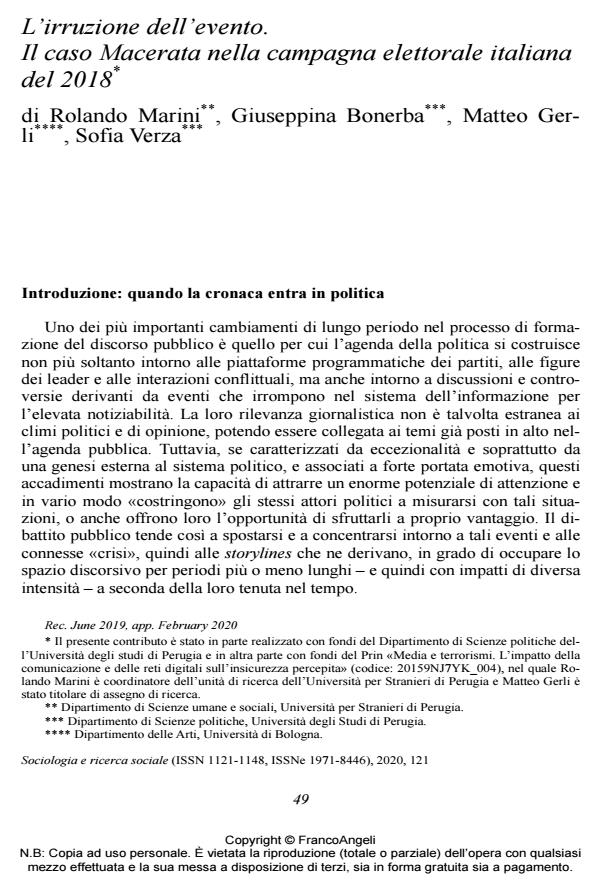The irruption of events. The Macerata case in the 2018 Italian election cam-paign
Journal title SOCIOLOGIA E RICERCA SOCIALE
Author/s Rolando Marini, Giuseppina Bonerba, Matteo Gerli, Sofia Verza
Publishing Year 2020 Issue 2020/121
Language Italian Pages 24 P. 49-72 File size 394 KB
DOI 10.3280/SR2020-121003
DOI is like a bar code for intellectual property: to have more infomation
click here
Below, you can see the article first page
If you want to buy this article in PDF format, you can do it, following the instructions to buy download credits

FrancoAngeli is member of Publishers International Linking Association, Inc (PILA), a not-for-profit association which run the CrossRef service enabling links to and from online scholarly content.
The main aim of this study is to investigate the relationship between news reports and the development of a public dialogue about immigration during the 2018 political election campaign. The study examines the way in which news-papers covered a series of dramatic events involving immigrants, which took place in the Italian city of Macerata. The «Macerata case» is analyzed in relation to a trend of evolving media practices characterized by increasing sensational-ism and the systemic assimilation of «permanent campaigning» into news items, demonstrating that political interference in news stories is not a casual or one-off occurrence.
Rolando Marini, Giuseppina Bonerba, Matteo Gerli, Sofia Verza, L’irruzione dell’evento. Il caso Macerata nella campagna elettorale italiana del 2018 in "SOCIOLOGIA E RICERCA SOCIALE " 121/2020, pp 49-72, DOI: 10.3280/SR2020-121003